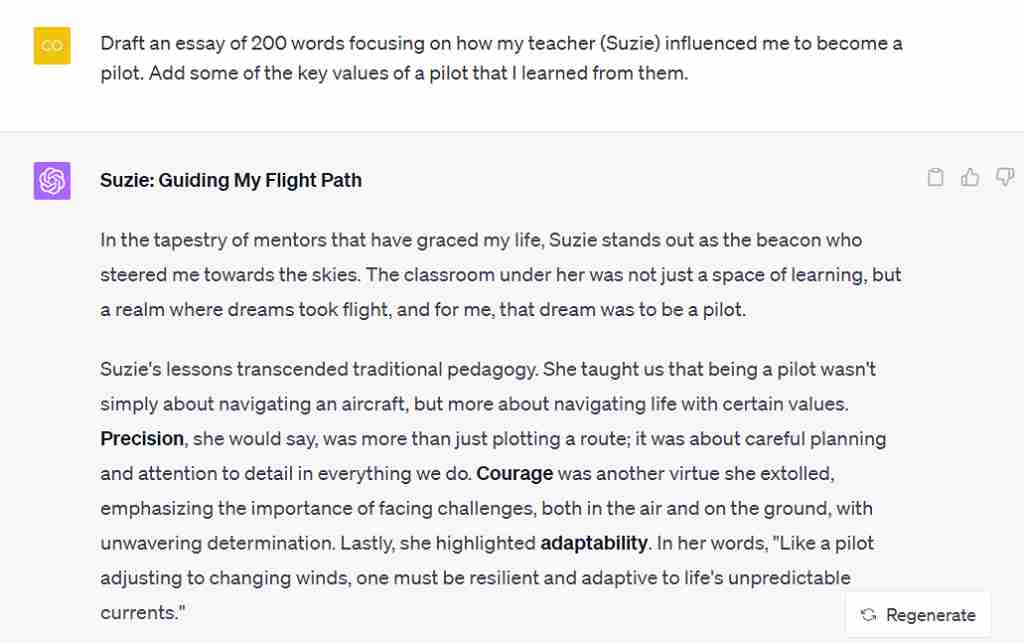
Why Should You Learn AI Prompt Engineering?
With the rise of generative AI technology, AI tools like ChatGPT, DALL-E, etc., threaten professionals as they are trained to do human jobs efficiently. It has raised concerns that employers will soon rely on AI to automate jobs, and human employees will incur losses. However, experts have pointed out that the scenario is unrealistic as AI tools lack human emotions and judgment.
Thus, they suggest professionals learn how to make the tools work in their favour to focus on more analytical aspects of their job where human judgment is required. That is why it has become crucial that professionals learn how to generate valuable AI prompts to give them their desired results within seconds. Employers are adding AI prompt engineering as a required skill in job descriptions.
Generative AI is the new and improved version of AI that can generate text, images, or other media forms using models trained to understand the user’s request patterns. Prompt engineering is the method that allows you to feed the database of the AI tools with examples of your previous work to train them. By honing this skill, you can increase their efficiency and generate responses to make your job easier.
How to Provide Efficient AI Prompts?
Since AI tools have already proven how to reduce your workload by completing tasks in 1/4th of humans’ time, it is wise to train yourself to provide these models with prompts that give you the best output.
Some of the points you should remember while framing an ideal prompt are:
Give Clear And Elaborate Instructions
To get the best output, you should define your purpose and add specific details in your AI prompt that you want in your output. Make sure you use numbers or symbols to make your AI prompt more clear.
If you generate texts or images, you should also add the tone or theme you desire in the output. In short, ensure your intent is mentioned in the AI prompt.
For example, if you want to generate an image of a group of friends chilling at a bar, your AI prompt should be – “Generate an image with 5 friends sitting at a crowded bar sipping on their beer, having a good time. Also, add the bartender and a few other people in the background.”
Add Keywords to Your AI Prompt
Keywords will determine the quality of your output. It is crucial, especially if you are generating texts. Adding keywords, you will be helping the AI tool focus on the relevant part of your content.
For example, if you want to generate an essay on how a teacher helped shape your career, your AI prompt should be – “Draft an essay of 200 words focusing on how my teacher (name) influenced me to become a pilot. Add some of the key values of a pilot that I learned from them.”

Source: ChatGPT
Apply Role Play
If you are a professional who regularly uses AI tools like ChatGPT or Bard for a specific purpose, you should ask the model to act in a certain way to get the desired results. Role-playing simplifies the process as you can make the AI model realize your intent by using only a few words.
For example, suppose you are a Social Media Manager who has to draft captions for Instagram or LinkedIn posts. In that case, you can provide an AI prompt like – “Act like a social media manager and draft a caption for an Instagram post of a Fashion brand that is launching its winter collection.”
Conclusion
The only way to get the best outputs from AI tools is to ensure that you are providing clear instructions and providing it with a specific goal. Experimenting with your AI prompts to get useful outputs for various needs would be best.
Instead of viewing AI advancement as a threat, you should use its features to your benefit. AI Prompt Engineering can help you achieve that by teaching you to communicate effectively with AI tools. Including the tools in your work will help you become more efficient and provide you with more opportunities.

